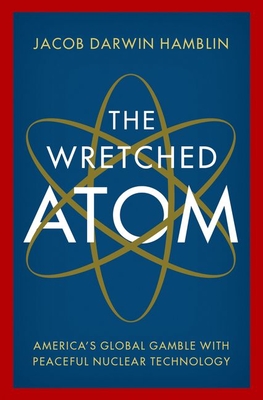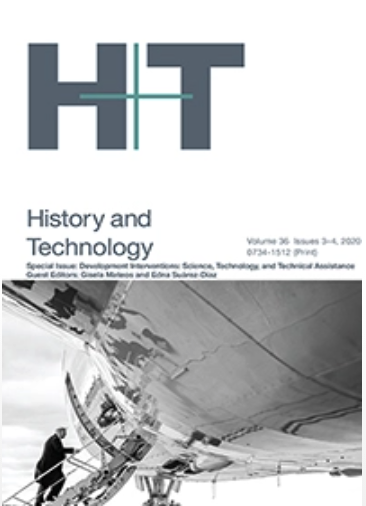 Environmental historians: want to take discussions of race beyond questions of environmental justice? I’ve got just the book for you.
Environmental historians: want to take discussions of race beyond questions of environmental justice? I’ve got just the book for you.
In fact, I’ve got something short and sweet that will give you a great idea of how scholars are exploring the interactions of different ethnic groups with the natural world. Four scholars agreed to take part in a roundtable on Andrew W. Kahrl’s excellent book, The Land Was Ours: African American Beaches from Jim Crow to the Sunbelt South (Cambridge: Harvard University Press, 2012). It turned out to be a thought-provoking discussion of capitalism, race, opportunism, and of course, changing natural environments in coastal areas.
Here’s my introduction to the roundtable, which gives some idea of its contents but also introduces the participants:
Nature’s role in facilitating social change, for better or for worse, is not easily denied. As an extreme example, one need only point to Hurricane Katrina in 2005, the racial tensions that accompanied the emergency management efforts, and the remaking of New Orleans afterward. After any natural disaster, some will choose not to rebuild, while others will see opportunities in the chaos. Some may leave and never return. Historically, in coastal areas where change by erosion and storms are constant, environmental transformations have been catalysts for demographic adjustments even when they were so gradual as to be imperceptible.
Such reconfigurations amidst environmental change offer opportunities for environmental historians wanting to understand how different groups of people have encountered the natural world. Much of the literature of environmental history may be skewed toward the perspectives of privileged whites, whether on the topic of wilderness preservation, natural resource conservation, or environmental activism of the latter twentieth century. Important exceptions are social justice issues, such as the sites of landfills or toxic waste dumps, and we encapsulate these with the terms environmental justice, environmental racism, and environmental equity. But increasingly scholars are going further, attempting to assess a wider range of experiences among racial minorities, to integrate their histories into the broad narrative of environmental history.
In The Land Was Ours, Andrew W. Kahrl sees the coastal American South as an ideal way to explore the interconnections between race, space, and environmental change. It was there that, during the Jim Crow era, African Americans had an enormous yet under-studied connection to land and sea, largely because privileged whites tended to avoid such land. And yet over time African Americans lost control to resort developers, for complex reasons that involve whites and blacks seeking political and economic opportunities in a natural environment that itself was changing. For Kahrl, it is a tale that compels us not only to see injustice, but also to related African American experiences to other processes in such as the commodification of beaches, the creation of unsustainable environmental practices, and the interaction between culture and place.
I invited Sarah S. Elkind to provide comments because of her long interest in unequal access to water, beaches, and resources in growing urban areas. Elkind is a professor of history at San Diego State University. In her introduction to a Pacific Historical Review forum on water and cities on the West Coast, she observed that urban growth in San Francisco, Seattle, and Los Angeles distanced the waters from several ethnic minorities, including Latinos, Native Americans, and Asian Americans. Not only did this limit leisure activity, but also it hampered these groups’ abilities to engage in important economic activities such as fishing and foraging. Work such as Elkind’s has opened up serious questions about the long-term and unequal consequences of supposed modernization and economic development.[1]
Another commentator, Christopher J. Manganiello, is the policy director of the Georgia River Network, an organization that works to ensure clean river water in Georgia. His Ph.D. dissertation from the University of Georgia assessed the consequences of dam construction in the South, and it won the Rachel Carson Prize for best dissertation in environmental history in 2010. Manganiello has written about the political context of the water resources in the American South, analyzing how water access evolved amidst competing demands from manufacturers, electrical power plants, and pleasure-seekers.[2]
Cassandra Johnson-Gaither, a research social scientist at the USDA Forest Service, has written numerous articles exploring how a variety of ethnic groups view and engage with nature. Her essay (with Josh McDaniel) “Turpentine Negro” grapples with the gap between African American and white interaction the natural environment, and points out that the answer may lie in the history of labor. She reveals how working in the turpentine extraction industry gave African Americans an intimate knowledge of forested areas but that the negative connotations of oppressive work practices made them less likely to seek them out for leisure. As a social scientist, Johnson-Gaither also is actively engaged in offering solutions to contemporary environmental equity problems, such as access to nature parks.[3]
Colin Fisher, an associate professor of history at the University of San Diego, shares many interests with Andrew Kahrl, including the uses of outdoor areas by African Americans. Fisher has shown that disadvantaged Americans did not necessarily lack the desire to pursue leisure in the wilderness. In an essay on the 1919 Chicago race riot, for example, Fisher pointed out that passion for nature and wilderness were not unique to privileged European Americans, and that nature provided an important escape from unhealthy and harsh conditions in the city. The difference was that when blacks attempted to cross the line between city and country, they had to overcome numerous social obstacles. These became a major source of tension, and even violence.[4]
Before turning to the first set of comments, I would like to pause here and thank all the roundtable participants for taking part. In addition, I would like to remind readers that as an open-access forum, H-Environment Roundtable Reviews is available to scholars and non-scholars alike, around the world, free of charge. Please circulate.
The roundtable, along with all the others, can be accessed (for free) at http://www.h-net.org/~environ/roundtables.html
A direct link to this roundtable’s PDF is http://www.h-net.org/~environ/roundtables/env-roundtable-3-6.pdf
[1] Sarah Elkind, “Environmental Inequality and the Urbanization of West Coast Watersheds,” Pacific Historical Review 75:1 (2006), 53-61.
[2] Christopher J. Manganiello, ““Dam Crazy with Wild Consequences: Artificial Lakes and Natural Rivers in the American South, 1845-1990,” University of Georgia Ph.D. dissertation, 2010; Christopher J. Manganiello, “Hitching the New South to “White Coal”: Water and Power, 1890-1933,” Journal of Southern History 78:2 (2012), 255-292.
[3] Cassandra Y. Johnson and Josh McDaniel, “Turpentine Negro,” in Dianne D. Glave and Mark Stoll, eds., “To Love the Wind and the Rain:” African Americans and Environmental History (Pittsburgh, 2004), 50-62; Cassandra Johnson-Gaither, “Latino Park Access: Examining Environmental Equity in a ‘New Destination’ County in the South,” Journal of Park and Recreation Administration 29:4 (2011), 37-52.
[4] Colin Fisher, “African Americans, Outdoor Recreation, and the 1919 Race Riot,” in in Dianne D. Glave and Mark Stoll, eds., “To Love the Wind and the Rain:” African Americans and Environmental History (Pittsburgh, 2004), 63-76.




Leave a comment